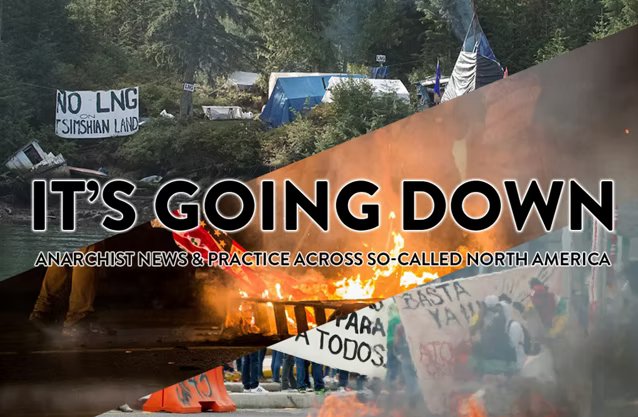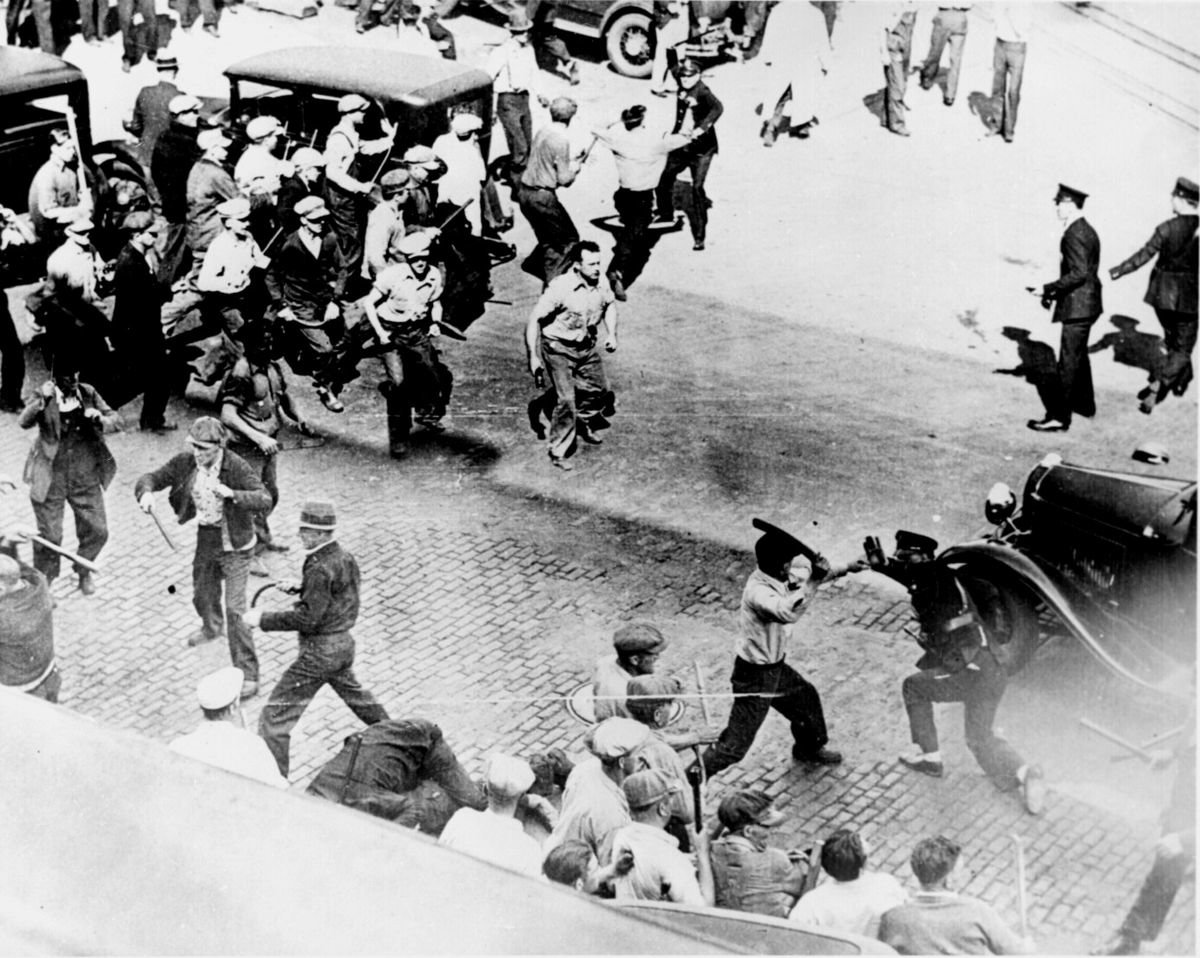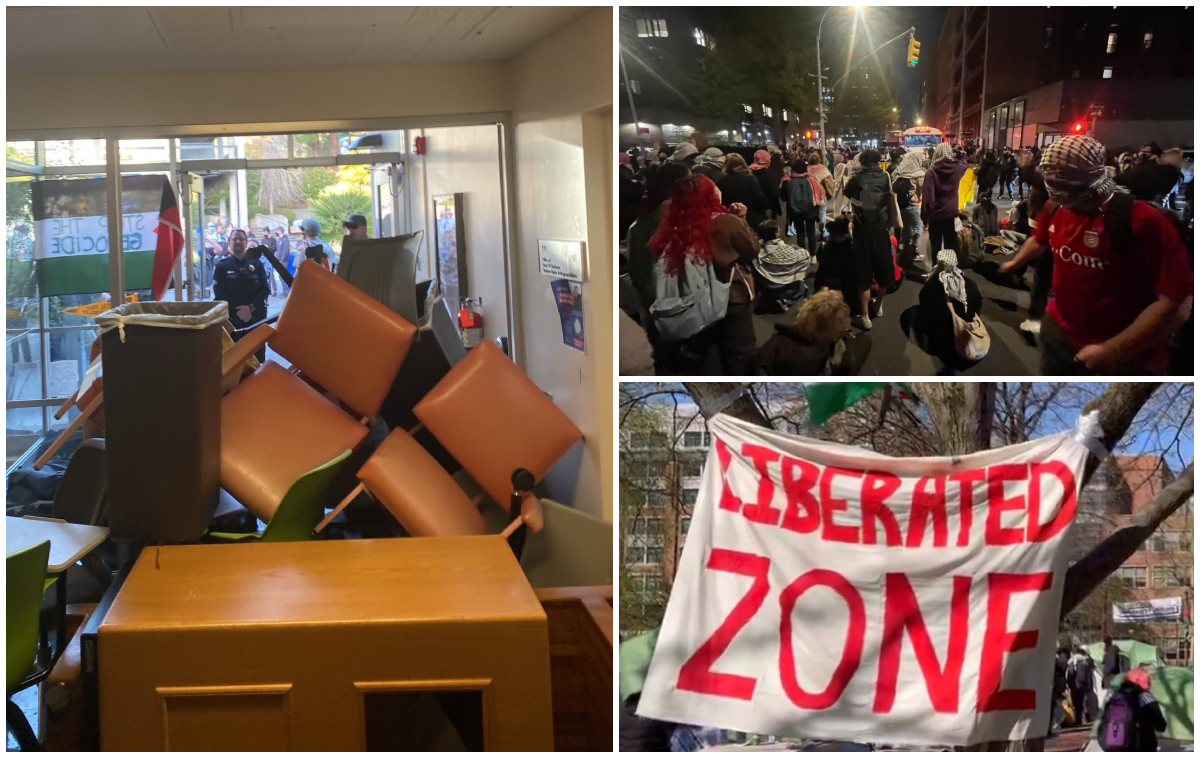Filed under: Featured, History, Interviews, US

Recently, It’s Going Down was asked by Kim Kelly (who we have interviewed on our podcast) to talk about the history and impact of general strikes within the United States, as well as the possibilities of its current applications for an op-ed in the pages of Teen Vogue. You can read the finished article here. What follows is our complete responses.
KK: Historically speaking, how successful of a tactic is the general strike?
In the American context general strikes have historically been very important, leading to not only the winning of key demands or beating back this or that attack, but also in fundamentally changing society, and at times, creating a potentially revolutionary situation, as workers have used them as a staging point for the taking over of cities and regions, and large sections of industries, and running them themselves.
One of the most successful general strikes, as noted by Black liberation and socialist author W.E.B. Du Bois, was when millions of enslaved Africans during the Civil War in the American south left plantations en masse and headed for the North, crippling the economy and the war machine. This, coupled with mass desertion of poor white Confederate soldiers, led to a crippling of the Confederacy, as many poor whites refused to die for the rich, white planter class, who was excused from fighting if they owned enough slaves. This combined desertion and mass general strike, played a key role in the collapse of the Confederate State, and also highlights the power of mass refusal under a neo-colonial power structure that thrives on a regimented caste system.
In the contemporary period, in 2006, a wave of wildcat strikes and school walkouts began in response to HR-4437, a bill that attempted to criminalize both undocumented people but also anyone that willingly offered them aid; for instance teachers at school could be charged if they did not turn in undocumented students. Starting from schools and growing to include strikes at workplaces, this mass movement that was largely self-organized and not led by political parties and unions, culminated in a massive May 1st demonstrations that saw a general strike of immigrant workers under the banner, “A Day Without An Immigrant.” The legislation was defeated soon after.
The immigrant general strike of 2006 also revived in the US popular lexicon the importance of May Day, which began as a celebration of the anarchist Haymarket Martyrs, who were executed by the State for their role in strikes in support of the 8-hour work day and against violent attacks on strikers. In this struggle, a variety of tactics were used, including mass strikes, which finally secured the right to the 8 hour work day.
But beyond simply attacking unjust legislation or as a means to win a reform, general strikes have also been the kicking off point for workers in the US to go about seizing the means of existence; in some cases, entire cities and regions.
In 1877 for instance, we saw the explosion of the “Great Upheaval,” where railroad workers launched a general strike, took over the railroads and ran them themselves, took up arms against the authorities, and also across racial lines, demanded higher wages and better conditions.
In 1919, a general strike in Seattle essentially took over the city, with the workers running their own affairs in an uprising similar to the Paris Commune for around a month, before being put down by the State.
General strikes in some areas of coal country led to what is called, the “Redneck War” in 1921, where over 10,000 miners fought and strike breakers, and during the insurrection, took over entire towns and rose up in arms literally against the military, who utilized planes via the air-force for the first time in American history against its own population. This spirit of the “Redneck War,” which referred to the insurgents red bandanas, also became a symbol of collective revolt during the mass teachers strike in West Virginia.
By 1934, mass and general strikes reached a fever pitch, with city wide uprisings breaking out in San Francisco and Minneapolis. These insurrections pushed the State to legalize unions, and the National Labor Relations Board was introduced via the Wagner Act in 1935, and began of process of capitalism attempting to integrate labor unions into its functioning in an attempt to remove class struggle from the street and into the hands of specialists.
 Strikers battle police on the streets of Minneapolis during a mass strike in 1934.
Strikers battle police on the streets of Minneapolis during a mass strike in 1934.
But the spirit of the general strike wasn’t pacified. In the post-WW II period, we saw a massive strike wave from Flint, Michigan to Oakland, California. In response, the State also passed laws that essentially outlawed what is called “solidarity strikes.” The Taft-Hartley Act passed after the general strike of Oakland in 1946 and made it illegal for unions to join with others on strike, thus in law, criminalizing the general strike.
To this day, the idea of a mass or general strike remains both an ideal and a tactic that can be picked up by everyday people if and when they discover the power to do so. And as American history has shown, this tactic is one that has been used by the working class as a whole, across lines of color, gender, trade, and geography.
KK: What kind of groundwork would people and radical communities need to lay out if we wanted to launch a successful general strike in 2019? 2020?
It really depends on the context. When Iraq Veteran Scott Olsen was almost killed by Oakland police in 2011 after police attempted to evict the Occupy Oakland camp, people declared a general strike only a week later. Responding to the call, up to 100,000 people participated in a day long strike (some would say ‘general protest’) that culminated in the mass shut down the Port of Oakland. Drawn by the gravity of the situation and in fear that their workers would walk out in wildcat strike, many unions and workplaces actively allowed their workers the day off, much to the anger of the local police department.
But strikes must do more than just symbolically ‘shut things down’ for a day; they must physically bring things to a halt. And, obviously the ability of workers to keep going on strike is dependent on both their own internal ability to support those on the picket lines, as well as the community support of those in the surrounding areas. As we saw with the current mass teachers strikes, which can be seen as literal general strikes across trade lines, collective and communal mutual aid and support from both picketers and community members (like school children) is key.
In some instances, workers also choose to strike by offering services for free: for instance during many transit strikes and job actions, bus drivers and transit operators will refuse to collect money. While such tactics have a clear goal: hurting the boss to the point of winning the engagement, at the same time they also prefigure a society that is self-organized and run by everyday people without market relations and money. We see many of these experiments playing out now with the shutdown, from mass sickout strikes to services being offered for out of work employees.
The film ‘PRIDE,’ details the relationship between revolutionary socialist queers in London who supported a mining village in Wales on strike during the Miner’s Strike.
Outside groups can also play a huge part in keeping a strike going as well. In the 1980s, anarchist and socialist groups played a key role in supporting the Miner’s Strike in Northern Britain, collecting money to support strikers and their families as the conflict played out, as well as standing on the picket lines and literally fighting the police. This in itself is another key aspect: the destruction of separations between working people as “striker” and “supporter,” and instead the growth of a human community in conflict with authority and capital.
But to your question, the more workers are organized, networked, and in dialog with each other in a horizontal manner, both across lines of trade, but also in terms of the broader community, the more prepared they will be to take action. Also building up community funds, support, and infrastructure is key as well. When we start to realize how much everything from gentrification to a racial divide on many job sites has separated us, we also begin to see the work that needs to be done in terms of bringing each other together along lines of common class interest.
We should also keep in mind that it is also possible that in today’s world, something that we would recognize as a general strike won’t be called a year in advance, nor will it be supported by the leaders of the trade unions and their handlers in the Democratic Party. For decades these institutions have attempted to be the wet blanket on working-class rebellion, not gasoline to its fire. In today’s world, just as the West Virginia teachers showed, successful working class revolt will happen largely in the face of official leadership and institutional authority, not because of it.
KK: What kinds of demands could you see people organizing around? The government shutdown is one thing, but perhaps for impeachment, or something else – what do you think could really get millions of people out into the streets? To what end?
We’ve got to think beyond simply just getting mass numbers out on the streets – we’ve also got to think about the way in which we do it. The Women’s March, the Climate March, the Science March, and March for Our Lives each saw millions of people out on the streets, but by and large they led to hardly anything beyond viral shares of ‘witty’ signs. This is because these mass mobilizations weren’t about shutting down the system, but instead about lobbying from within it – something that is completely manageable. This is why a lot of Centrist pundits were terrified of the rioting and blockades that took place on J20 as well as the Ferguson and Baltimore uprisings, yet applauded the Women’s March for being tame, respectable, and with easily identifiable talking points: largely, go vote.
But to your question, there are really two ways of looking at general strikes; offensively and defensibly.
Defensibly, there should be a general strike across Michigan to demand clear drinking water and decent infrastructure in homes and in schools. Workers in the gig economy and at places like Amazon should launch general strikes demanding better pay and benefits. Workers facing the threat of being removed from their jobs by automation and AI technology should launch general strikes to save their jobs. There should be general strikes against police killings and to demand resources go towards housing and addressing the overdose crisis, not expanding the Pentagon’s budget. The list goes on.
Offensively, humanity as a species and earth as a planet is at a crossroads. Do we in the next 10 years or so overthrow industrial capitalism or do we pretend that reforming aspects of it or electing “progressives” will get us out of this mess?
A mass refusal to work; to literally lay down the tools of this industrial monstrosity and deciding how to move forward without destroying our home is both the easiest and simplest way forward – and literally more realistic that buying into the fantasy that left to their own devices, politicians and capitalists will get us out of this mess.
KK: What do you think it says about the state of labor and resistance in 2019 that even liberal randos on Twitter (plus John Cusack?!) are tweeting out “GENERAL STRIKE NOW!?”
People are afraid that Trump is going to push for more and more autocratic power, and thus they are allowing tactics that formally were taboo to be talked about in the open. For us as poor and working people, its important to remember that this is part of our collective history, not something that is “new.” Just as the red bandanas worn by teachers in West Virginia signaled their link to insurrections in the past, so to in struggle will we discover our collective power and shared history of revolt.
Also, with many scientists having a much less optimistic look at industrial civilization than the Unabomber did 10 years ago, more and more people are coming to the conclusion that this system does work, but not for the majority of the people, and at the expense of the future of the planet.
When coupled with an increasingly repressive State and an economy that squeezes us harder and harder, we are starting to understand that the vast majority of human beings across this planet have a shared interest in the destruction of capitalism. If the elites of this world can teach us anything in this realization, its the understanding that we as a class have these interests and we should fight for them, and not allow this veil of ‘democracy’ to trick us into thinking we are all equal special snowflakes within this society.
A task incumbent on young people then, is to push past these new goals posts presented by the Cardi B’s of the world, and to see that what is now presented as acceptable still isn’t going to cut it. A break with capitalism won’t come through official institutions – meaning political parties or unions leaders or non-profits, it’s going to come as it always has, from people at the bottom, mass organizing and fighting back against the top.
This also means especially that when revolt does break out, it’s not going to follow the rules we have been told over and over again we must follow in order to create change. Meaning: liberation won’t come by begging rich and powerful people for a different way of life, it will come by us literally building one on our own terms and saying to hell with the old world.





